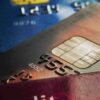How Much Money Should You Have in an Emergency Fund?
An emergency fund, also sometimes called a contingency fund, is made when you put money aside in case of an emergency or the unforeseen need to spend a large amount of money. This often includes things such as job loss, accidents, home loss, or something similar.
While the amount of money you keep in an emergency fund is dependent on what your income is and how much you have in savings, a general rule of thumb is that you should keep enough for you to be able to survive and pay expenses for about six months.
Are you wondering how to set up an emergency fund, what the best way to do so is, and how much money you should keep in one? If so, read on to find out more about these special savings accounts.
What is an emergency fund?
The first thing to consider is, what exactly is an emergency fund? Simply put, an emergency fund is a safe store of money, often kept in a private bank account, which is saved up in case of emergency. This can cover all types of emergencies, from medical emergencies to home loss due to natural disasters to the loss of a job.
While this type of fund is not exactly the same as a regular savings account, it is a type of savings account. Just like one might put away money for college, or retirement, you can also put away money for an emergency.
This fund can be made with the same bank as your regular credit and savings accounts or with an outside bank. Generally, you will spend a year to a couple of years building up the emergency fund, putting money away each month until you have enough in the fund.
How much money should you have in an emergency fund?
An emergency fund is an extremely important part of financial planning, as not only will it, as the name suggests, save you in times of emergency, it will also afford you peace of mind during non-emergency times, as you will know that you have a solid back up plan in place should things go wrong.
So how much is enough? Generally, an emergency fund is considered to have enough money in it if you can comfortably carry on with your way of life – meaning spending on food, bills, and that type of thing, for at least three months and preferably closer to six.
That way, even if you were to suddenly find your jobless, or if you or a family member end up in the hospital for a long period of time, or living in a hotel or other alternative accommodation, you will be able to survive without too much added financial stress.
How Long Does it Take to Build an Emergency Fund?
Generally, building an emergency fund will take about a year on average, if your fund isgoing to support you for six months. It usually takes twice as long to build the fund as the length of time that the fund will support you for. So, it would take, for example, six months to build a fund for three months, twelve months to build a fund for six months, and so on.
Of course, this is also dependent on what your income, bills, and spending are per month and how much you can afford to put into the emergency fund, but this equation can be taken as a general rule. There are a few things you can do, however, to try to make this
process faster, such as:
- Choose a bank
- Slow Spending
- Budgeting
- Consider a second job
Choose a Bank:
Often, it is a good idea to keep your emergency fund in a separate bank from your usual bank, as that way you will be less likely to use the money set aside. Similarly, if you do not have a visa, debit, or credit card connected to that bank, you will be less likely to use the saved money.
Slow Down your Spending:
This one may seem obvious, but a great way to begin your emergency fund is to cut out some of your spending, such as money used for new clothes, restaurant meals, and similar non-essentials, and put that money aside for the emergency fund. Some people have a monthly spending budget for non-essentials. Try transferring this to your emergency fund for a few months, and this will be a great way to begin the saving process.
Budgeting:
Writing down your budget can help with making sure that budgeting plans reach fruition. Rather than just telling yourself that, yes, that money will go into the emergency fund just as soon as you earn it, write the plans down. Often, writing something down will make it harder for you to go back on it, therefore making it more likely to happen.
Consider Alternative Income Methods:
For some people, of course, this is impossible. But, if you have the type of job that will allow some time on the side for a second part time job, or even for a creative job, such as selling a product you make or something similar, that could be a good way to generate funds which you can set aside for use solely in building an emergency fund.
What Are Some Good Ways of Saving for an Emergency Fund?
There are a few different ways to start saving for an emergency fund. These vary, meaning that there are methods for all different types of people from all different walks of life. The best way, and the least overwhelming, is to begin by simply saving a little bit each month. There is no need to try to begin with a large sum, just what you can spare.
There are a few other strategies which can help you to begin without feeling like you are flailing from the starting line. Some of those include the following:
Method 1
One way to start off an emergency fund is to save your tax refund. Often, after filing taxes, citizens will get a tax refund. This can be quite a lot of money, sometimes even going up to the thousands. In fact, about 75% of people on average get a tax refund.
Saving this refund each year is a good way of starting off the emergency fund, as you do not have to do any extra organizing or work. All you need to do is make sure to put that tax refund right into your emergency fund account.
You can even organize things so that any tax refund you receive is put into a direct deposit into your emergency fund. That way, you will not be tempted to spend it in the interim.
Method 2
Another way is to save spare change. This may seem obvious, or as if it will never amount to much, but saving any spare cash, including spare bills like fives, tens, and twenties, will eventually add up. If you put all of the spare cash you make each month into a jar and deposit it at the end of the month, you may be surprised with how much you end up with.
Method 3
You can also make it into a competition. Enlist a friend, family member, or even your spouse to compete to save money, putting any extras into your emergency fund.
Making the saving into a competition will help you to hold yourself accountable. It is an easy way to ensure that you take the saving seriously, and can help to motivate you to save more.
What Type of an Account Should I Keep my Emergency Fund in?
There are a few different places you can keep your emergency fund. It is generally agreed upon that it is best to avoid keeping it in the same account as you use daily, as doing so will make it easier for you to inadvertently dip into the emergency fund.
Another thing to consider is that your emergency fund should be liquid, meaning it should be able to be easily converted into cash or something else you can use quickly.
That being said, what then is the best place to keep it? There are a few ideas which stand out as some of the best:
- High Yield Bank Account
- CDs
- Money Market Account
High Yield Bank Account:
A high yield bank account is an account in which funds are easily accessible, meaning the funds are liquid, and also that there is generally a high interest rate on whatever money you put into the account.
You can open a high yield savings account, which is basically a savings account that you will be able to access easily through the bank. Further, if you open it in a separate bank to the bank you use for your current account, you may qualify for a welcome bonus, which is offered by certain banks to newcomers.
CDs:
CD stands for ‘Certificate of Deposit’, and can be a good choice because you put money in and get a guaranteed fixed rate of return. That means that you are ensured to have a return on any money you put in, making this an especially good place for an emergency fund, since you will not be accessing it regularly.
There is a downside to using CDs, however, which is that it can often be harder to withdraw the funds, especially at a short notice. Obviously, since emergencies most often come with short notice, this is not ideal. However, often you can withdraw the funds by paying a small fee, so the issue is not a make or break problem.
Money Market Account:
Another option is to keep the emergency savings in a money market account, which is just like a regular bank account that you can access online, at the bank, or through an ATM. These accounts are a good choice because they often have a high yield, like a savings account.
Further, since these accounts are accessible easily through an ATM or even online, they are a good choice since you can withdraw the funds at little to no cost at any time, therefore making you ready for an emergency at any time.
Conclusion:
Making an emergency fund is an important thing to do in order to be and feel financially secure. There are a variety of different ways to begin, to continue adding, and to store the money kept in the fund, and each depends on your income, your average monthly spending, and the length of time you want your emergency fund to last.
In order to find out which is the best method for you, consider each of the options listed in this article and compare them to your personal financial situation.




